#as flexible as i want it to be
Explore tagged Tumblr posts
Text
gonna try to write later tonight!! but forgive me if i’m absent from the dash bc i’m feeling anxious today 😔
#my brain decided to have a bad day even though nothing has gone wrong! it’s been a good day#but my mood is all wonky and my anxiety is not great so while i do want to write i don’t really want#to be around if that makes sense#and i dunno?? maybe this is the anxiety talking but being here has been stressing me out a lil#no one has made me uncomfortable!! it’s more a thing of wanting to rip the bandaid off#and remake and cut my muse list down dramatically#and also just? feeling weird bc my energy levels are not where i want them so my muse is not#as flexible as i want it to be#my decision paralysis is also at an all time high which is a problem when following multi’s and being one myself#there’s just!!! a lot of thinking on my end and like i said it might just be my anxiety acting up#i’m really rambling and venting sorry y’all ;;;;#get ready to ramble | ooc#tw vent
6 notes
·
View notes
Text
Though there are valid reasons to want characters to have their own identities, I think some people insist too much on the Batfamily having all individual, unique names. This is why the Orphan name persists so much in fandom, or even Wayne Family Adventures - it's a byproduct of seeing 'Batgirl' as transitory and lesser than. This is not only a misunderstanding of Batgirl, but a misunderstanding of legacy mantles. Legacy mantles aren't stepping stones towards individuality, but identities with symbolic and storied histories. Characters can, and sometimes should, end in a legacy role.
It's also interesting that this anti-legacy philosophy is exactly what DC adopted during the New 52. They destroyed virtually every legacy they could, including wiping Tim's Robin history, erasing the JSA, and deleting Cass and Steph's histories. We all agree New 52 was bad, but most people focus on the content/ramifications on a specific character, when it's the philosophy that was wrong. New 52 was an effort to diminish the power of legacy titles, and to dismiss many characters that fall under the legacy umbrella.
Some characters should grow out of their mantles, of course. But that doesn't make the mantle they grow out of less meaningful or important than the mantle they step into. If we want to leave the New 52 behind, we need to leave its anti-legacy philosophy behind, too.
#batman#batfam#batgirl#robin#dc comics#this is obviously how i feel about 'orphan' but also 'the signal'#it is not 'better' that duke is a hero with no history instead of a legacy#he was explicitly denied the prestige connection and symbolism of the robin role that he was geared up to take#'everyone should have their own name' is also bat-centric because i don't think people are arguing about sharing the name 'green lantern'#not every legacy role is robin!! not every legacy role represents youth!! not every legacy role is a step to something bigger!!#(even robin itself is flexible in this regard)#anyway tim drake can steal as many names as he wants <3
533 notes
·
View notes
Text

When sparring out of your weight class, you gotta fight dirty [part 2]
#ghost folded soap and gave him a little ‘gay for Lt’ panic#soap is flexible and ghost wants to test the limits#141 shows recruits how it’s NOT done#sparring gone wrong but sparring gone right#the size difference is immaculate#ghostsoap#ghoap#simon ghost riley#john soap mactavish#soapghost#john mactavish#simon riley#soap x ghost#ghost x soap#cod mw2#have a safe monday viewer#I hope to draw a continuation of this#M18 COD
3K notes
·
View notes
Text




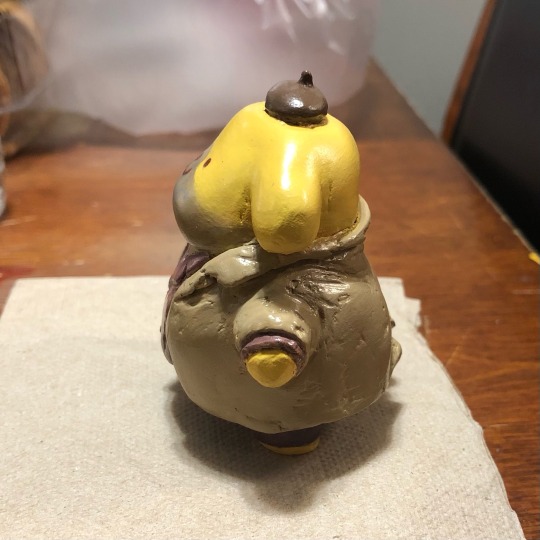
*♡೫̥*・:.·˖*✩⡱Here’s the finished pompompurin columbo i sculpted! Ain’t he cute 。:°ஐ♡*゚*✩‧₊˚
Under the cut is some collage work in progress and a size comparison next to a sonny angle

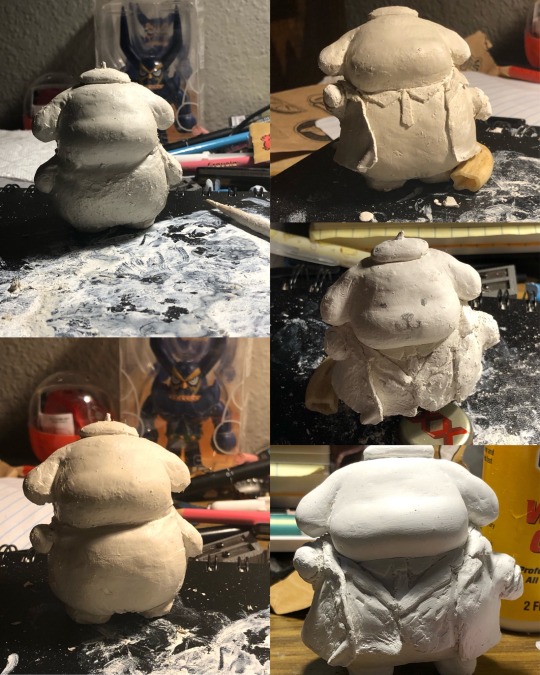

#a lot of mistakes and a lot of learning I did while sculpting it#I’m going to make one more☝️#this will be ver. 1#as you can see I forgot to add his raincoat pockets#should’ve added more buttons on coat#also wanted to add in his little loops he has on his raincoat lapel#I wanna use the rustic color air dry clay next time I buy it#his cigar 😫😫😫 🫶#maaaaan i could’ve used some of that tacky tape to stick his cigar on his little paw but I went with the flexible magnet ……#omg also also had to carve out pants for him 😭#columbo#pompomlumbo#pompompurin#pompompurin columbo
754 notes
·
View notes
Text
Went from being totally lost as a teenager to finding solace in aesthetics and fitting urself into a template in my late teens and now I think I struck a healthy intermediate where I know who I am as a person generally but I’m also completely subscribed to the idea of evolving and would never deny trying something just bc it doesn’t fit the image of myself I crafted in my head
#I rly want to spend a considerable amount of time just testing things and seeing how I like them instead of figuring out how they fit into#The jigsaw of my selfhood#Bc that’s the kind of self containment that keeps ppl from exploring who they truly r beyond what they associate w certain aesthetics that#Have already been done to death#Also part of this is accepting that I as a human have shifting opinions and may change my mind and so change the way I carry myself#I get sad when I see ppl label flexibility w how u conduct urself an identity crisis#This is literally why the well is so dry and nothing is new anymore#In reality ppl who invented the wheel just looked at things they liked and incorporated that into who they are and that’s how they became#Trends#like if you can envision a way it fits into ur head that’s all that matters#And if you allow urself the ability to change ur mind on things that’s so much the better#And an important skill to have in life actually
168 notes
·
View notes
Text
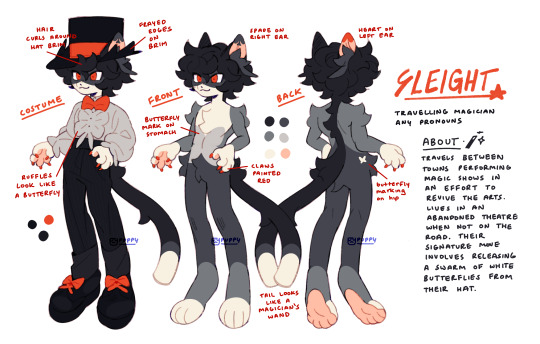
updated Sleight ref!!
#i changed his colors !!#treat this as a suggestion than a solid ref. i spent like 3 hours drawing and redrawing the legs bc i couldnt get the shape right so if u#wanna draw them more planti or digi i do not mind ^_^ get silly with it!! same goes for pelt pattern do whatevr u want with it#the pelt pattern is loosely based on a snowshoe cat which was fun to play with. as u can see they kinda have a butterfly motif going on#if u squint the ear tufts kinda resemble luna moths or swallowtails with the long tail at the end of the wings#i was kinda torn about changing the costume color but it clashed too much with the new color palette so i had to change it#i didnt include the cape here so its easier to see the costume but ill draw it another time if i remember lol#its also a lil hard to see but i put pinstripes on their pants but thats optional. their design is pretty flexible anyway#god im pretty attached to this guy already. hes like semi fan character semi regular character... oc... thing#i should draw more furries. i followed some furry artists for giggles recently and its true what they say. u need furries in your life#btw while i was drawing this i was fooling around while trying to figure out his costume color and colored it as kaito kids suit for fun#and i just stared at it for a solid 5 minutes before saving a picture. maybe ill post it later#my art#myart#my oc#oc#furry art#fur#furry#laika's comet#laika's comet oc#fan character#sleight#ref sheet#oc ref sheet
932 notes
·
View notes
Text
i’ll actually never be over the look on Wade’s face when Logan starts walking away. btw
#you can SEE his brain immediately go ‘oh fuck oh fuck wait i don’t want that to happen at all’#he may be a flawed - morally flexible person but oh my god he cares so much#poolverine#deadpool and wolverine
121 notes
·
View notes
Note
Would you ever consider a physical release of what lurks beneath? I adore this comic and would love to have a copy if it were ever meant to be!
yeah! (: My friend is resizing WLB for print!
It's slow going, these pages need a lot of editing. None of the night scenes in this comic would print nicely, so i need to lighten the colors in a lot of scenes. But i am actively working on it! (:
It's going to take some time.
#answers#first volume should be chapters 1-18#but with 17 pushed to the second volume because its a thresher chapter and its placement is flexible#It's over 400 pages its going to be beefy#I really want to end it on Trouts attack though
131 notes
·
View notes
Text
Khait overview:
Khait are domesticated bovids. Their wild ancestors were a wildebeest-like antelope standing an average of 48-55 inches at the shoulder, while modern khait exist in a variety of sizes and forms. The majority of riding khait average out at 55-65 inches tall, though exist in small but exceptionally hardy 'pony' forms adapted to harsh terrain, and (much less commonly) as very large draft animals. Their horn shape, coloration, and mane shape/length/texture varies tremendously across the domestic population, as a result of both natural development and active selective breeding.
They were first domesticated on the vast western steppes in a slow process of accommodation to caelin scavenger-nomads that would follow their herds to consume their dead. Their use was initially solely for meat and hides (and being passively ridden by their 20-30lb handlers), and gradually came to encompass carrying packs, plowing, pulling carts, and eventually pulling chariots and being actively ridden when their domestic population came into human and elowey possession. Their ability to carry large riders shaped the trajectory of human and elowey history and spread, and they remain the key and most widespread mounts used by the large mammalian peoples.
Their usage is functionally near identical to horses in real life- most of the domestic population are large, strong animals capable of carrying grown humans on their back, pulling carts and hauling packs, etc - but they have significant behavioral differences to anatomically modern horses (and the small, three toed horses in the setting).
When left to their own devices, mares and their young will form loose, overlapping territories. Females form strong social bonds amongst themselves and their herds may retain the same members for life, but they do not form permanent attachments with males. Young males are driven off by their mothers at adolescence, and will coalesce in bachelor herds until they are mature enough to compete for mating rights. Adult bulls establish their own territories and defend these from other males during the breeding season while females pass through at will.
In captivity, the majority of males will be gelded. Geldings are typically unaggressive and adopt female-esque social behavior, developing strong peer bonds with mixed herds of females and other geldings. Intact adolescent males can be kept together until they are fully mature (4-5 years old), while bulls are typically kept apart from all other intact males (though in practice, many individuals may coexist peacefully if not in the presence of receptive females). An optimal captive setup is to keep a herd of up to 30 females and geldings on the same land as a single intact bull. If breeding is to be avoided, captive herds should be separated into mare and gelding bands during the summer months (ideally with both groups able to see, touch, and smell each other), with the bull kept with the geldings. Fully separating a bull from contact with a herd is damaging to the animal’s health- they are highly social prey animals and will suffer from severe stress if deprived.
Khait maintain social bonds primarily via grooming, spending much of their time at rest meticulously licking each other. This strengthens their bonds and relieves stress and physical discomfort. They retain some juvenile behavioral traits well into adulthood as a byproduct of domestication and will readily engage in social play while at ease- chasing, headbutting, kicking, mud rolling, and scraping dirt with their horns.
Herds maintain stable dominance structures. The dominant individual is typically the eldest mare (though in captive herds a gelding may take this position) while young individuals and immigrant members are at the bottom of the social structure. Hierarchy is maintained through ritualized displays rather than overt aggression, though dominant individuals may be physically aggressive towards unfamiliar khait, and introductions of new animals to a herd must be done cautiously. Bachelor herds have only loose social ties with no real hierarchy, and territorial bulls have no distinct place in the dominance hierarchy of associated herds. Mares are known to frequently mount each other (and geldings) as an aspect of dominance behavior, while bulls are occasionally known to mount other males during socialization and play.
Mares have a seasonal breeding cycle determined by daylight hours (going through estrus cycles in the summer and anestrus in the winter), but their receptive period is far longer than that of their wild ancestors (which would have only bred for a month-long period in late summer) as a byproduct of domestication. Dominant mares get first dibs on breeding and may attempt to prevent low ranking mares from mating (though a bull will usually attempt to mate with all receptive members of the herd).
In the presence of receptive mares, bulls put on elaborate performances to advertise their health and willingness to mate. They aggressively scent mark their surroundings with glands on the hooves and below the eye, urinate with an erection to spray their leg and chest hair, toss their manes, scrape the ground with their hooves, dig out tufts of dirt and grass with their horns, and chase females around with a very silly looking, high stepping trot. When two bulls compete, they will perform these behaviors in each other’s direction while periodically stopping to investigate each other by scent. If one does not back down during this challenge display, they may fight. High intensity fights involve both animals dropping to their knees and locking horns, shoving until one falters or flees. These shoving matches may be physically intense, but are ritualized and rarely result in actual injuries. Bulls are occasionally known to get their horns locked together (particularly in the context of domesticated khait having a variety of horn shapes), which can be fatal if not intervened with, and attempting to untangle two very large, panicked animals can be fraught.
Mares investigate a bull’s condition by observation and scent before allowing a close approach, and may mate with the same male multiple times in one estrus cycle. Gestation lasts about 10 months, and foals are born capable of standing and running within hours. Pregnancies almost always produce one foal, with twin births being very rare but not unknown.
Khait are fully domesticated and come from long lines of ancestors accommodated to extensive handling, but their instincts as prey animals make the process of 'breaking' a khait can be complicated. The halter, bit, and saddle is unsettling for unaccommodated animals, and the sensation of being mounted by a rider resembles being pounced on by a predator and may be distressing. The methods used to train a khait for riding vary tremendously across cultures- existing anywhere on a spectrum between wrestling a yearling down, mounting it, and holding on for dear life until the khait calms (perhaps a briefly traumatic approach, but often necessary to the demands of life in a khait-based nomadic context) to extremely gradual accommodation processes lasting years.
Human (and other sophont) keepers benefit from the khait's proclivity towards dominance hierarchies, but cannot fully fill roles in the khait social system. Khait behavior towards handlers differs strongly from behavior towards other khait, as they conceptualize people as non-threatening predators. However, khait can still form strong and trusting bonds with handlers. A comfortable, healthy, well bonded khait will implicitly trust their handler in matters of watching for predators, and will usually tolerate annoyances in handling that they would otherwise react to aggressively. They will attempt to bond with handlers by grooming (ie: licking them), and are known to produce wholly unique contact calls reserved for their associated sophonts and never used towards other khait. A handler responding to in kind (scratching and brushing, speaking and singing to it) will reinforce this bond, which can last the khait's entire life.
Khait are socially intelligent animals, and adept at reading body language and emotional cues (scent, tone of voice, etc) of the sophonts they are accommodated to. This is partly instinctual behavior developed over generations of living with a specific sophont, but largely a learned process- a khait born to human-accommodated parents growing up with elowey handlers will eventually become 'fluent' in their handler's body language (it just may take longer to do so).
#I realized I've never like. actually introduced khait as animals. They aren't Just like Horses But Different (though definitely did draw#on some horse behavior here and there especially wrt how they relate to humans and react to saddle training)#I say 'wildebeest like animals' because I based them on wildebeest but wanted to have some flexibility with their behaviors. A lot of#what I described is accurate to wildebeest (or like. a speculative domesticated wildebeest) but some of it draws from#other bovids entirely#creatures
71 notes
·
View notes
Text
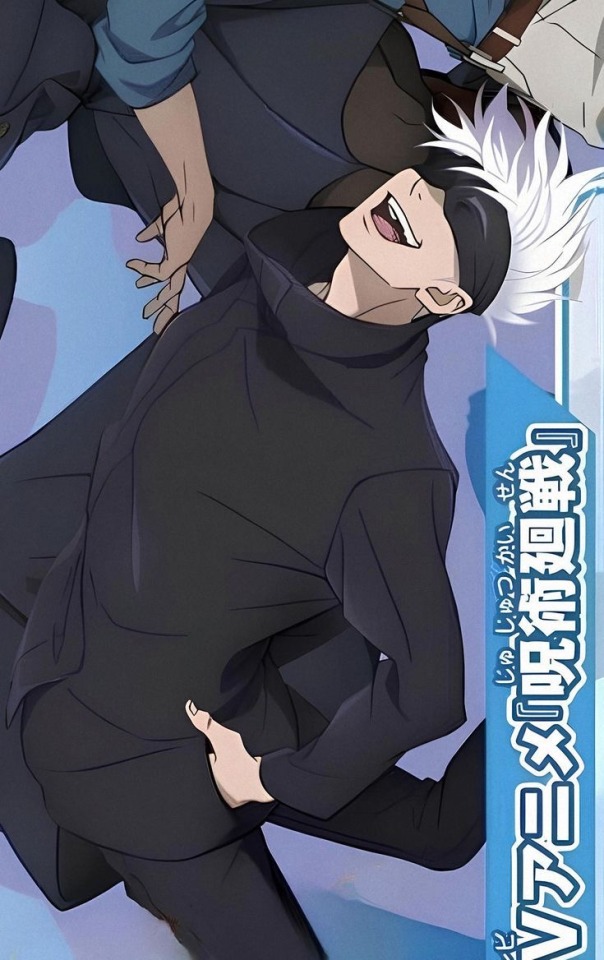
HES SO
#i want to put him in my pocket#WHY IS HE BENT LIKE THAT#is he flexible…#gojo satoru#yeah no fucking way he’d fit in there#im talking ab my pocket btw#gojo
300 notes
·
View notes
Text

Moon scribble from yesterday. I love him.
#i think i want him#to pose like this in a few chapters#also messing around w his flexibility and mobility#dca au#fnaf daycare attendant#fnaf sun and moon#fnaf dca#dca fandom#fnaf#time still stands tag#scribbits art#moon fnaf#fnaf moon#fnaf moondrop#art
172 notes
·
View notes
Text
comm-comic for @fidorance! accepted the request to see if i should make it another option for comms but i am nOt doing stuff like this again sorry i dont enjoy it enough to do it for other people besides me ajdkjfjsa

#i got up from bed 2 times the night before sending the result bc i was like#*1am* I FORGOT SHELLY'S FRECKLES *2am* I FORGOT COVE'S SCAR *3am* am i forgetting something else...? (paranoid)#btw funny story the client said 'step1 shelly with a bucket hat' and i thought it was a literal bucket#silly me :3c#rui draw smth#our life mc#our life: beginnings & always#our life#olba mc#olba#cove holden#art commisions#commission#rui chambea#if anyone wants me to make a minicomic like this the minimun is 50$ btw. my convictions r flexible with the right number 🥺/hj#con dinero baila el perro dicen
196 notes
·
View notes
Text

advancing my marazhai hypermobility propaganda
#warhammer rogue trader#marazhai aezyrraesh#rogue trader#all achievable by yours truly fyi#i had a lot of fun drawing these actually#ways to inflict passive suffering: stand near mr xray brain and show him your bones are flexible#or ravor. im still convinced ravor would be disturbed by this#fyi. top right. the leg goes up as counterbalance else you Cannot do this. the torso can flex as much as you want opposite to the leg held
56 notes
·
View notes
Text
im sorry you cannot convince me this isn’t suna rintarou
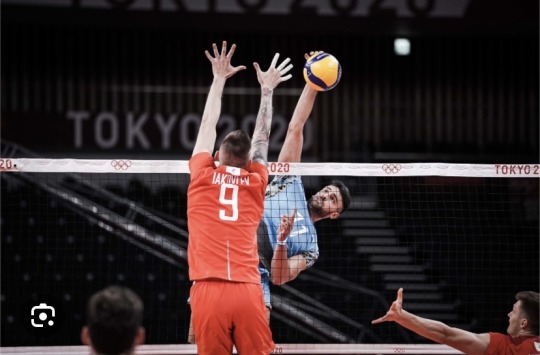
#i wondered how it look rl when suna spiked cause i wanted to see if his flexibility was exaggerated and goddamn it was not#haikyuu#suna rintarou#suna rintarō#suna rintaro haikyuu#suna rintaro fluff#miya atsumu#sakuatsu#sakusa kiyoomi#skts#haikyuu!!#hq msby#suna rintaro x reader#suna rintaro irl#miya osamu#miya twins#inarizaki#aran ojiro#kita shinsuke#original overanalyzing
396 notes
·
View notes
Text
Think I’m making communication a non-negotiable for 2024. If you don’t know how to properly communicate like an adult we quite literally can’t be friends
#I’m not trying to be a bitch like I get that this is hard for lots of people for various reasons#i think I’m just at a point where I want people to come correct instead of waiting for them to potentially get better#only for me to learn in the harshest way that they’re only getting worse#I’m not gonna be ur practice run this year. come when ur ready#the moment I sense someone isn’t saying what they mean it’s so over. like I’m flexible on so many flaws but NOT this one. communicate !!!#the people pleasing is literally kicking in rn but I’m just trying to be honest w myself about what my capacity can handle at the moment#and I’m genuinely at my wits’ end when it comes to communication. so I don’t think I’d be the best person for people like that#is this mean?? this feels like a fair boundary to make#p
192 notes
·
View notes
Text

"The means you use, aren't meant to confuse Although they do, they're the ones that I would choose"
#myart#maccadam#lockprowl#tfa lockdown#tfa prowl#i just wanted to scratch an itch between artwork renderings#and i have this image on my mind for quite long#i hate when the most busy i am with other things#my brain wants me to scribble new stuff pfff#imagine cool chiaroscuro effects and that this is full colored because in my mind is finished but right now#orz#posing Prowl is so hilarious because he is practically as flexible as a cat: you can draw him with his torso facing to one direction#and from waist down to another direction and it wouldnt look bad LOL
118 notes
·
View notes